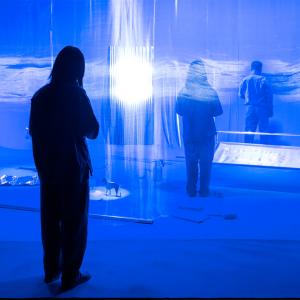Art-Space
This department shapes visual artists who specialize in the layout of space and who can both work in artistic creation and in cultural production and diffusion. The curriculum is based on all the contemporary creation crafts taught in the School.
- Theoretical course dedicated to year 3
- Group workshops—Workshops with guests
- Critical reading
- Annual guest lectures in year 3
- Introduction to editing and distributing 2D work
- Introduction to the use of sound in all its plastic and technical dimensions
- Education support related to written forms, both on and around the work, as part of the Bachelor’s degree and of the Master’s degree thesis.
Teaching
The curriculum draws on all the skills offered by the School’s various departments, which art has embraced since the earliest days of modernity.
Thus, students experiment with volumes, images, performances and installations in both traditional and modern media.
Each student progressively shapes their unique voice through collective and interdisciplinary work, which is inherently linked to constant exploration and dialogue. The curriculum is based on thorough technical skills taught by the various and high-level technical studios of the School (lien vers 19 ateliers), while deepening the cultural and critical dimension which underpins them. Students learn to master the theoretical, methodological and formal elements of any project so that they may provide their own personal input.
After they have completed the course, students will be able to execute commissions and to create projects, using all the technical and technological tools (visual or textual for instance) at their disposal. Although their skills are mainly related to the artistic field, they may also be applied to exhibitions, urban spaces and to cultural production and diffusion.
The permanent educational team is made up of practicing artists and theorists, but enriched by a new guest artist every year and by various professionals who participate in workshops. Following Jean-Charles De Quillacq in 2020, Adélaïde Feriot in 2021 and Chloé Quenum last year, Anne Bourse will be the new guest artist in 2023-24.
Bachelor’s Degree
The Art-Space Bachelor’s degree encourages students to explore the challenges raised by contemporary shapes and ideas through the input of theoreticians and artists, who feed the students’ penchant to resolve the issues of our world. Whether it’s sculpture, performance, painting, installation or drawing, the aim is to ensure transversal and non-exclusive experiments with both existing and future operating procedures. They encompass all media and voices so that art may be an exploratory, critical and challenging place.
To get their Bachelor’s degree, students must present their work to a jury composed of teachers from the Art-Space Bachelor’s and Master’s degrees and of a teacher from one of the other departments. The curriculum includes workshops, theoretical classes, cross-sectoral workshops, internships, training courses, projects with partners, exhibitions and more occasional yet as fundamental courses:
Master’s Degree
Since the curriculum of the Master’s degree’s is designed so that students can develop both their plastic and conceptual practice in preparation for the Grand Projet, students have fewer classes than in the Bachelor’s degree. They are given more time in the workshops so they can work on their plastic practice in depth.
The teaching staff pay close attention to the students’ personal work evolution, following on from that begun in the Bachelor’s degree. They help students define their plastic and conceptual research in the context of the history of art, ideas, crafts and of exhibitions.
Those classes are thus moments of collective thinking. Moreover, the individual meetings provide critical input on the development of projects.
Exploring installations and exhibitions is one of the major challenges of the Art-Space Master’s degree. Installations encourage students to develop their own critical thinking. Those installations take place within the school over 3 to 4-hour sessions during which we listen to students explain their artwork and where everyone is welcome to take the floor. Understanding the importance and challenges of installations and exhibition, which the various education initiatives foster, is crucial to carry out the Grand Projet in the Art-Space department. That is specific to this department.
In year 4, students are encouraged to imagine a group project which can take the form of an exhibition or an event of any size held outside the School.
The course called L’art de l’exposition combines theory and practice around a project held in an exhibition space that does not involve contemporary art.
A partnership with the “L’art contemporain et son exposition” professional master’s degree (Paris Sorbonne) was created for fifth-year students. (Ndr: faire un lien.) Several meetings are held throughout the year and result in an exhibition which takes place in a contemporary art institution that the students of the professional master’s degree chose (Bétonsalon in 2023, Centre d’art contemporain Chanot in 2022).
Some courses are taught every year of the degree (surveying workshops, performance classes, the Tertulia course which encourages structured and organized debates…)
Enseignant·es
| Nom | Fonction |
|---|---|
Alain Declercq
Alain Declercq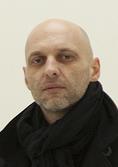
Expositions en France (Palais de Tokyo, MAMVP, centre Pompidou, etc) et à l'étranger (Moca de Taïpei, Mac de Melbourne, ISCP de New York, etc). Représenté par la galerie Loevenbruck, Paris et Elaine Levy, Bruxelles. |
Artiste |
Gerald Petit
Gerald Petit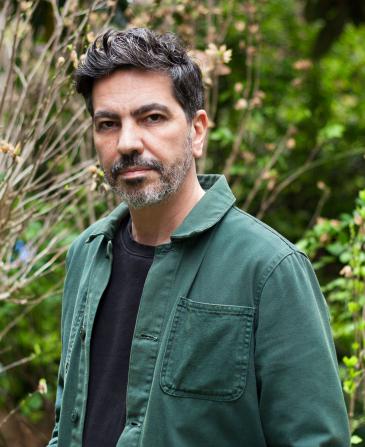
Né en 1973 à Dijon, Gerald Petit est artiste et professeur de peinture à l’École des Arts Décoratifs - PSL. Reconnu pour son travail de peinture, de photographie autant que pour ses oeuvres « rumorales », son travail a fait l’objet de nombreuses expositions personnelles en France, aux Etats-Unis ou encore au Japon. Il est représenté par la galerie In Situ - Fabienne Leclerc à Paris, qui vient de lui consacrer une exposition monographique, « AMAREM », faisant suite à « Ni île », qui revisitait 25 ans de travail au Frac Normandie en 2023/2024. La recherche de Gerald Petit consiste à expérimenter les modalités d’apparition, de génération et de fixation des images. Il utilise pour cela plusieurs mediums, tels des outils, et plusieurs catégories de représentation, privilégiant toutefois ces dernières années la peinture… |
Peinture et des pratiques contemporaines; Artiste |
Kristina Solomoukha
Kristina Solomoukha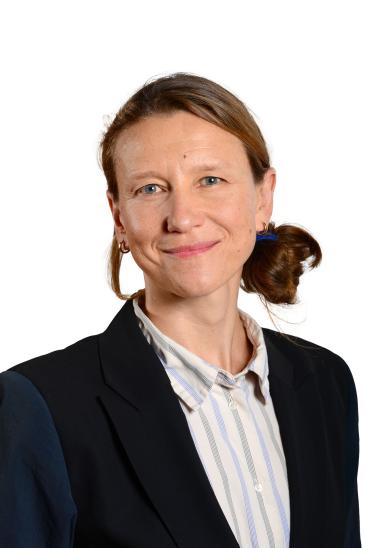
La démarche artistique de Kristina Solomoukha inclut une grande variété de projets collaboratifs et curatoriaux. Nourrie d'un intérêt pour l'anthropologie et l'histoire, ses œuvres, qui vont du dessin à l'installation, de la vidéo à la performance, interrogent la dimension politique et sociale des images. Née en 1971 à Kiev (Ukraine), Kristina Solomoukha a étudié à l’Institut d’Art Industriel de Kiev. En 1995 elle est diplômée de l’ENSBA de Paris. Elle a enseigné à la HEAD à Genève, l’ENSA Paris-Malaquais, l’ESAD à Reims et est intervenue dans les écoles d’art, design et architecture en France et à l’étranger. Actuellement elle enseigne à l’EESAB site de Rennes et à l’ENSAD à Paris. Pour ses réalisations plastiques elle initie des collaborations avec les artistes, graphistes, curateurs et architectes. Ses installations, vidéo ou projets curatoriaux procèdent de la recherche dans les champs de l’histoire, l’anthropologie et la sociologie. Récemment le travail de Kristina Solomoukha a été présenté à Vabaduse Galerii (Tallin, Estonie), à Tabakalera (San Sebastian, Espagne), à Closer (Kiev, Ukraine). Et en France aux Laboratoires d’Aubervilliers, à la Nuit Blanche et à la galerie Contexts à Paris, au FID de Marseille, au 116 centre d’art contemporain de Montreuil, ainsi qu’au FRAC Poitou-Charentes. |
Plasticienne |
Sarah Tritz
Sarah Tritz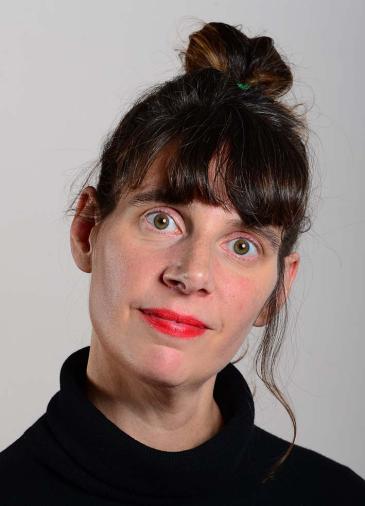
Sarah Tritz (née en 1980), vit à Paris et travaille à Ivry-sur-Seine, est diplômée de l'ENSBA Lyon (2004). Elle développe depuis une vingtaine d'années une pratique plastique protéiforme mêlant plusieurs types de média, de matériaux et d'économies de moyen. Le dessin est l'outil principal de sa réflexion plastique et conceptuelle, il opère comme une écriture archaïque et minimale. Le trait synthétise des filiations hétérogènes en passant par la copie et la traduction. Elle travaille depuis 2019 par séries : les maisons, les paquebots, les trains, les petits camions, les bustes, les boites, les théâtres, les chats, les costumes, les pulls, les marionnettes... souvent en carton bois peint, en bois ou encore en textile. Elle dessine également du mobilier et collabore régulièrement pour cela avec un artisan ébéniste. Sarah Tritz a exposé dans de nombreuses institutions françaises et étrangères. On a pu voir dernièrement son travail à la Tôlerie (Clermont-Ferrand), au CREDAC (Ivry-sur-Seine), à la Galerie (Noisy-le-Sec), à la Casa Jorn (Albisola), au MAMCO (Genève) au MRAC (Sérignan), au Palais de Tokyo à Paris, à la Fondation d’entreprise Ricard à Paris etc. Ses oeuvres figurent dans les collections du CNAP, du FMAC (ville de Paris), du MRAC Occitanie, du Nouveau Musée de Monaco et dans de nombreux FRAC. Elle a enseigné de 2010 à 2015 à la Villa Arson, de 2015 à 2019 à l'ENSBA Lyon et enseigne à l’École des Arts Décoratifs - PSL depuis 2019. |
Artiste plasticienne |
Mémoires
| Étudiant.e.s | Titre du Projet | Année |
|---|
